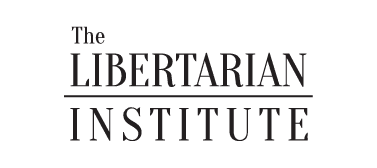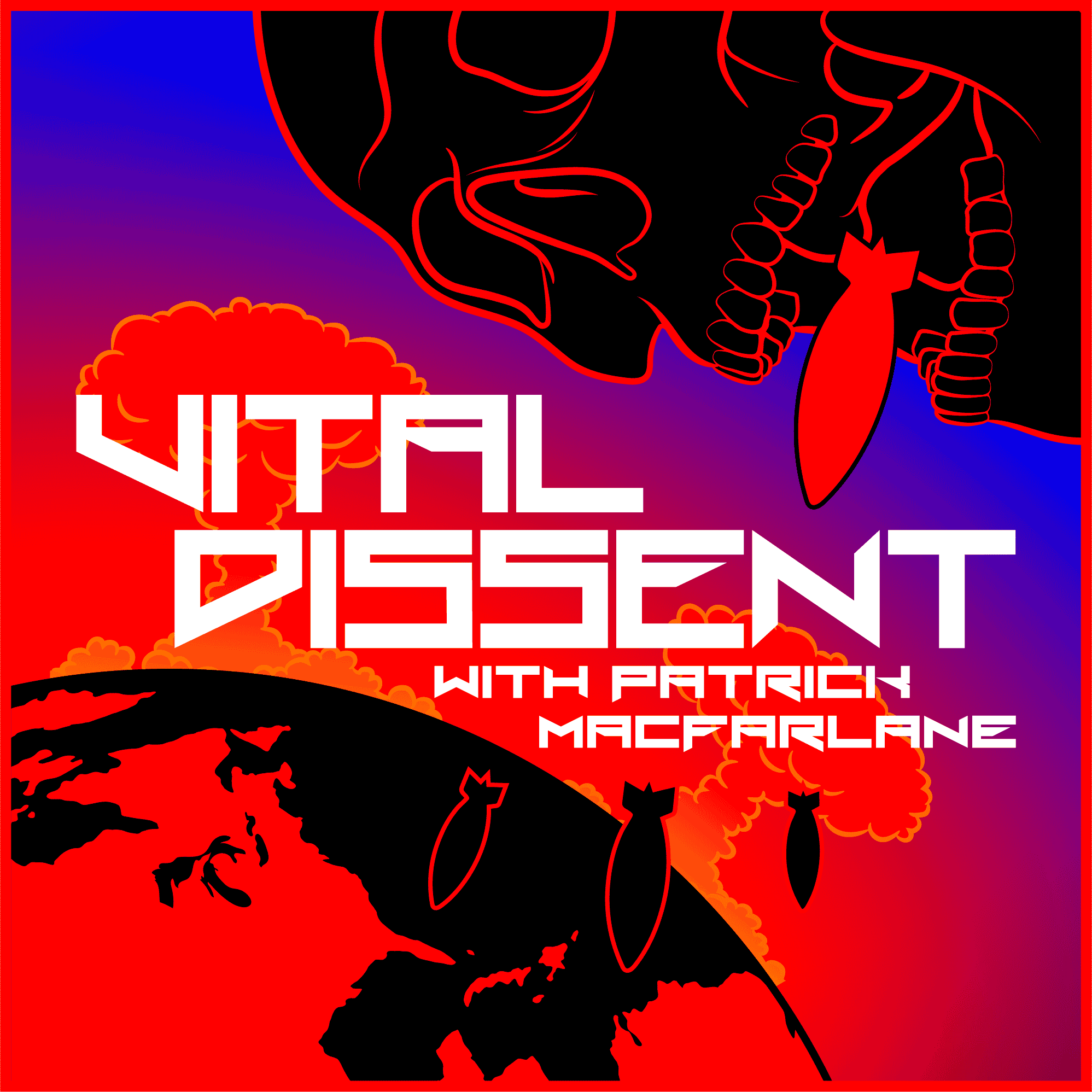The CDC claims that studies have proven “vaccines do not cause autism.” Here’s why that’s not true.
Contents
New Paper Dispels the Myth of ‘Settled Science’
I am pleased to announce the publication of a paper I had the honor of coauthoring with Dr. Brian Hooker and Dr. Jeet Varia that thoroughly refutes the claim that studies have proven “vaccines do not cause autism”!
Specifically, we demonstrate how the 2019 Hviid et al. study out of Denmark purporting to disprove an association between the measles, mumps, and rubella (MMR) vaccine and autism—even among “genetically susceptible” children—is not merely flawed but arguably an example of how to design a study to find no association.
Our paper is titled “Hviid et al. 2019 Vaccine-Autism Study: Much Ado About Nothing?”, published in the Journal of Biotechnology and Biomedicine on May 7, 2025.
Continue reading below for a brief overview of the relevant background information and a plain-language summary of the key findings from our critical analysis.
To introduce my coauthors, Brian S. Hooker, Ph.D., is the Chief Scientific Officer of Children’s Health Defense (CHD) and the father of a son with autism. He famously broke the story of CDC whistleblower William Thompson, which was featured in the film Vaxxed. Jeet Varia, Ph.D., is a Fellow in Science and Research at CHD. I am enormously honored to have had the opportunity to collaborate with these extraordinary gentlemen on this important new paper.
The result of government vaccine policies has been the systematic violation of the right to informed consent and an alarmingly unhealthy childhood population; instead of doing journalism, the mainstream media parrot official dogma to manufacture consent for this crime against humanity; and truth-tellers are systematically censored—or otherwise penalized for the sin of heresy against the vaccine religion.
Our aim with this paper is therefore to help facilitate serious reporting about vaccines in the mainstream discourse—which to date has been gravely lacking.
If you feel that is a worthy goal, please take a moment to share this empowering knowledge with others. I know firsthand how difficult that can be—how it can mean facing personal attacks from your own friends and family. But this is no time for silence. We are moving forward now. Someday, when humankind becomes civilized, people will look back on our present era and recognize the practice of coerced mass vaccination as utterly barbaric. Please join us in this civilizing mission. Our children and future generations of humanity are depending on us.
The Autism Epidemic
On April 17, the US Centers for Disease Control and Prevention (CDC) published its latest estimate of the prevalence of Autism Spectrum Disorder (ASD) among children aged 4 and 8 years within its autism and developmental disabilities monitoring network.
The data show an approximate 384% increase in the prevalence of autism since the turn of the century.
In 2000—as the mercury-based preservative thimerosal was being phased out of most childhood vaccines after it became public that the CDC’s schedule was exposing infants to cumulative levels of mercury in excess of the government’s own safety guidelines—autism prevalence was estimated at one in 150 children.
According to the latest estimate, the rate of autism is now one in 31 children, or over 3% of all children in the network.
Yet, the message from the government, media, and medical community is often that there is nothing to be concerned about because there is no autism epidemic; it’s all just a statistical artifact from changes in diagnostic criteria and greater awareness.
So, we are supposed to believe it has always been the case that one in 31 children had autism, but nobody noticed.
The condition of autism was first described in the 1940s by Leo Kanner, but it wasn’t until 1980 that it became recognized by the American Psychiatric Association (APA) as an official diagnosis in the third edition of its Diagnostic and Statistical Manual of Mental Disorders, or DSM-III. Prior to that, autistic children tended to be diagnosed under the category of “childhood schizophrenia”.
Retrospectively applying current diagnostic criteria using data from California, researchers have estimated that in 1931, the prevalence of autism was one in 100,000, or about 0.001% of the childhood population. In the early 1980s, the estimated prevalence of autism was one in 2,500. Thus, the estimated prevalence of autism since the early 1980s has increased by 7,965%—an over 80-fold rise.
It’s true, of course, that the diagnostic criteria have changed over time. Before it became an official diagnosis in 1980, children with what would now be considered autism tended to be diagnosed with “childhood schizophrenia”.
Further diagnostic changes occurred in 1994 with the publication of the DSM-IV. “Autistic Disorder” was the formal diagnosis for autism, distinct from “Asperger’s Disorder” and “Pervasive Developmental Disorder – Not Otherwise Specified” (PDD-NOS). These three conditions were informally referred to as “autism spectrum disorders” but officially fell under the broader umbrella category of “Pervasive Developmental Disorders (PDDs)”.
In California, a nearly 7-fold increase in autism was observed between 1990 and 2001. A 2009 study for the UC Davis MIND Institute found that only about 24.5% of that increase was attributable to changes in diagnostic criteria. The study’s press release bluntly stated that the increase “cannot be explained by either changes in how the condition is diagnosed or counted—and the trend shows no sign of abating.” A separate study looking at California data from 1992 to 2005 similarly determined that 73.6% of the increase in autism was not explainable by diagnostic changes.
In 2013, diagnostic criteria were changed again with the DSM-5. The PDD category was eliminated, and the three subcategories of Autistic Disorder, Asperger’s Disorder, and PDD-NOS were replaced with a single diagnosis of “Autism Spectrum Disorder”. This change is often said to have broadened the definition of autism so that prevalence estimates now include children who would have previously received different diagnoses—or none at all.
But that’s not the whole story. In fact, the diagnostic criteria for ASD in some respects narrowed.
A 2012 study analyzing the impact of the proposed changes under DSM-5 determined that 39.4% of children clinically diagnosed with one of the three pervasive developmental disorders informally considered part of the autism spectrum would no longer meet the diagnostic criteria for ASD.
The study authors noted that the proposed changes “appear to result in a more stringent diagnostic threshold” and suggested this might help address the concern that increases in prevalence were simply artifacts of the diagnostic broadening in 1994.
Another study analyzing the proposed changes found that 9% of children then considered on the spectrum would be excluded from an ASD diagnosis under the new criteria, which the authors explained was consistent with the APA’s stated goal of better distinguishing ASD from other developmental disorders.
The concern at the time was not that the new diagnostic criteria would result in artifactually increased prevalence estimates but that it “might lead to reduced identification of children previously diagnosed with ASD.” (Emphasis added.)
In short, statistical artifacts due to changes in diagnostic criteria and greater awareness go only so far in explaining the trend. The autism epidemic is real.
The CDC has no answer to the question of what has caused this alarming epidemic of autism—but it insists self-servingly that its routine childhood vaccine recommendations have absolutely nothing to do with it.
We are told that numerous studies have proven that vaccines do not cause autism.
But that is a bald-faced lie.
The CDC’s House of Cards
The “public health” establishment and mainstream media repeat ad nauseam that numerous studies have repeatedly proven that “vaccines do not cause autism”.
Any suggestion to the contrary is mocked and dismissed as “vaccine misinformation” from “anti-vaxxers” who are “anti-science”—the term “anti-vaxxer” being the media’s derogatory label for anyone who advocates of the right to informed consent.
The truth is that there are no greater purveyors of vaccine misinformation and disinformation than the “public health” and mainstream media establishments.
Consider, for instance, how the entire “public health” establishment brazenly lied that two doses of an mRNA COVID‑19 vaccine would confer durable sterilizing immunity, ending the pandemic by stopping infection and transmission of the virus—while those of us who told the truth were censored for trying to correct the CDC’s transparent vaccine disinformation.
Here is the truth they likewise don’t want you to know about vaccines and autism:
No studies have ever been done to test the hypothesis that vaccines administered according to the CDC’s schedule can contribute to the development of autism in subpopulations of children with a genetic or environmentally caused susceptibility. Consequently, the hypothesis cannot possibly have been falsified.
Don’t Trust. Verify!
We are told that many studies have absolutely debunked the vaccine-autism hypothesis, but even a cursory review of the medical literature reveals that those studies looked only at one vaccine or one vaccine ingredient—the measles, mumps, and rubella (MMR) vaccine or thimerosal, respectively.
Additionally, a study by Zerbo et al. looked at maternal influenza vaccination and risk of autism, which found that flu shots during the first trimester were associated with an increased risk indicating four additional cases of autism for every 1,000 women vaccinated—before the authors “corrected” the data by inappropriately treating potential cofactors as “confounders”, thus successfully eliminating the statistical significance of the association.
It’s worth nothing that, while thimerosal was phased out of most childhood vaccines, it is still used in flu shots. And while this mercury-based preservative was phased out of other vaccines, numerous shots given during early childhood contain aluminum, another known neurotoxin. This includes the three-dose series of Hepatitis B (HepB) vaccine indiscriminately administered to infants starting on the very first day of their lives.
Another willful lie we are told is that no vaccine is added to the CDC’s routine childhood schedule until it has been studied for safety both alone and when given with all other recommended vaccines. In fact, as acknowledged by the Institute of Medicine (IOM) in 2013, no studies have ever examined the safety of administering vaccines according to the CDC’s schedule.
In 2018, I confronted Washington Post reporter Lena Sun and her editors for lying about this. I showed them the IOM review and quoted statements from it that directly and unambiguously belied her claim. Her response was to nonsensically accuse me of “cherry-picking” from the review while refusing to explain how I had in any way mischaracterized it and refusing to otherwise produce any evidence to support her claim. By refusing to issue a correction, Lena Sun and her Post editors proved their intent to deceive.
We are constantly told that vaccines saved us from the scourge of infectious diseases that were the leading cause of death in the early 1900s, but it is an uncontroversial fact from the historical data that 90% of the decline in infectious disease mortality witnessed during the 20th century occurred before there were vaccines available to help explain it—a decline instead caused by factors related to an increasing standard of living, such as better sanitation, hygiene, and nutrition.



We are told that we need to vaccinate our children so they can be healthy, but as I detail in my book The War on Informed Consent, scientific data from independent researchers show that completely unvaccinated children are far healthier than their vaccinated counterparts—a phenomenon explored in the film Vaxxed 2 with parents’ testimonies of vaccinated elder children suffering chronic illnesses and disorders contrasted with completely healthy unvaccinated younger siblings.
We are told by the CDC that a large body of studies have proven that “vaccines do not cause autism”, but none of the studies cited by the CDC to support that claim considered the possibility of genetically susceptible subpopulations of children.
In fact, as detailed in our paper, that claim from the CDC is directly contradicted by its own cited sources.
The institutionalized cognitive dissonance is illustrated by the admission in 2008 from CDC Director Julie Gerberding—who went on to land a job as president of the vaccine division at the pharmaceutical giant Merck—that vaccines can cause brain damage manifesting as symptoms of autism in genetically susceptible children.
She was referring specifically to the case of Hannah Poling, a 19-month-old girl with a mitochondrial disorder who developmentally regressed into diagnosed autism after receiving nine vaccine doses at once.
In a federal claims case under the Vaccine Injury Compensation Program (VICP), the government conceded that the vaccines “significantly aggravated an underlying mitochondrial disorder, which predisposed her to deficits in cellular energy metabolism, and manifested as a regressive encephalopathy with features of autism spectrum disorder.”
The VICP was created under the 1986 National Childhood Vaccine Injury Act, which also granted broad legal immunity to vaccine manufacturers to shift the financial burden for vaccine injuries away from the pharmaceutical industry and onto the taxpaying consumers.
In 2014, the director of the CDC’s Immunization Safety Office, Frank DeStefano, admitted that “it’s a possibility” vaccines could trigger autism in “genetically susceptible individuals”, but scientists don’t know because it’s “hard to predict who those children might be”, and trying to determine the risk factors is “very difficult to do”.
The CDC’s claim that “vaccines do not cause autism” is naturally also maintained by the American Academy of Pediatrics (AAP)—an industry-funded trade organization that colludes with the government to render the CDC’s recommendations “standard of care” in pediatric practices across the country.
In 2017, I challenged the AAP to support its claim by producing studies considering the possibility of susceptible subpopulations. The AAP first tried and failed to do so; and then, after I pointed out that none of the studies they provided met that criterion, they refused to produce any additional studies.
Genetic Susceptibility
As far as I have been able to find, there have only been two studies that considered the possibility of genetically susceptible subpopulations of children with respect to the question of whether vaccines can cause autism.
The first was a study by Jain et al. published in JAMA in 2015.
That study was similarly hailed by the media as conclusively proving that the MMR vaccine does not cause autism even in genetically susceptible children.
That narrative was fed by the explicit conclusion of the study authors that their findings showed that the MMR vaccine is not associated with an increased risk of autism even among children with an autistic older sibling, which is how they defined genetic susceptibility.
Yet that conclusion does not follow from their findings. In fact, that is not the hypothesis that the study was designed to test.
Instead, the authors sought to determine whether parents of a firstborn child who is MMR-vaccinated and then diagnosed with autism will be less likely to vaccinate later-born children with MMR due to fears of the vaccine causing autism—which is exactly what they found.
It wasn’t that genetically susceptible children were no more likely to develop autism after MMR vaccination but that children at higher risk of autism were less likely to receive the MMR vaccine.
What Jain et al. thus identified is an inherent selection bias sometimes called a “healthy user bias”, whereby children at higher risk of autism were pooled into the MMR-unvaccinated cohort. The logical conclusion to be drawn from their findings, therefore, is not that “vaccines do not cause autism” but that further studies are required that control for this selection bias.
Instructively, Hviid et al. cited Jain et al. and borrowed their definition of “genetic susceptibility” by limiting that description to children with an autistic sibling. But despite being perfectly aware of the healthy user bias inherent to such vaccine-autism studies, they made no effort to control for it.
Critical Analysis of Hviid et al.
In our paper critiquing the Hviid et al. study, my coauthors and I highlight contradictions between the study and how it was reported in the US. We identify several major flaws in the study’s design that biased it in favor of finding no association between the MMR vaccine and autism. We also identify unexplained discrepancies, irreproducible findings, and conflicts of interests.
Here is a summary of the key points we raise:
- The authors used an inadequate and misleading definition of “genetic susceptibility” whereby 49% of the study population was defined as not genetically susceptible simply by virtue of being an only child.
- Despite purporting to test the hypothesis that MMR vaccination is associated with autism in genetically susceptible children, the study excluded children with genetic disorders placing them at higher risk of autism—thus improperly treating those conditions as competing hypotheses instead of potential risk factors placing children at higher risk of vaccine injury manifesting as symptoms of autism.
- Despite knowledge of its existence, Hviid et al. failed to control for healthy user bias—and while they claimed to have found “no appreciable difference” in vaccination rates among children considered genetically susceptible, we identified numerous indications to the contrary from their data.
- The study only considered the MMR vaccine as a risk factor for autism and thus cannot be used to support the claim that “vaccines”—plural—do not cause autism.
- While a secondary analysis considered other vaccines as covariables, or factors potentially affecting the risk of the MMR vaccine causing autism, the authors failed to account for all vaccines routinely recommended for children in Denmark.
- The study also failed to account for a change in the formulation of the MMR vaccine that resulted in children who received the earlier formulation being generally too young to receive an autism diagnosis by the end of study observation.
- The study also otherwise included many children who were under the average age of autism diagnosis by the end of the observational period, which means that a certain proportion of those children were likely to have gone on to receive an autism diagnosis—thus again biasing the study in favor of finding no association.
- The study failed to account for a change in the recommended age for administration of the second dose of MMR vaccine, from age 12 to age 4—thus also biasing the study in favor of finding no association, if we reasonably assume that the risk of vaccination causing autism is higher for children still in earlier stages of development.
- The study failed to consider any vaccinations that the mother may have received during pregnancy despite maternal immune activation ben a known risk factor for the development of autism.
- The study excluded immigrant children who may have been at higher risk by virtue of being more likely to receive many vaccine doses at once to “catch up” with the schedule.
- By using data from a national vaccination registration database, the study potentially classified many vaccinated children as “unvaccinated”, with an earlier study having showed that 55% of children indicated as “unvaccinated” in the database were in fact vaccinated, according to medical records. This likely under-ascertainment of vaccinated children further biased the study in favor of finding on association.
- The rate of autism in the study population was considerably below the estimated rate of autism in Denmark, suggesting that thousands of autistic children were missing from the study and thus that the study population was not representative of Denmark’s childhood population.
- As expected, the authors state that the latest-born cohort of children had the highest risk of autism, and in their supplementary information, they reported an increasing risk of autism over time; yet the data they present in the study show a decreasing rate of autism over time—a fundamental contradiction in their data that the authors were confronted with but refused to clarify.
- The supplementary data indicated a higher risk of autism among genetically susceptible boys that did not reach statistical significance, but this may have simply been an artifact of the small sample size of children meeting the inappropriately narrow definition of genetic susceptibility.
- The data similarly indicated a higher risk of autism among genetically susceptible girls until about age 11, at which time a huge leap is seen in the cumulative incidence of autism among MMR-unvaccinated girls that the authors offer no comment about despite the obvious need for an explanation.
- Denmark’s vaccine schedule is far less aggressive than that recommended by the CDC, and even if the study’s secondary analysis had considered all vaccines on the Danish schedule as covariates in the risk of MMR causing autism, its findings still would not be generalizable to the US childhood population.
- The biased nature of the study is easily enough explained by the conflicts of interests among the authors as well as the journal editors.
A superb summary of the key points from our paper has been written by Dr. James Lyons-Weiler, a research scientist and author of The Environmental and Genetic Causes of Autism. Here’s how he describes it:
The Hammond et al. review, published in the Journal of Biotechnology and Biomedicine, does not simply critique the statistical conclusions of the Hviid paper—it dissects the very structure of its logic, methodology, and assumptions. Their verdict is unequivocal: the Hviid study could not have disproven a vaccine-autism link because it was never designed to find one. If anything, it was designed to avoid one.
I encourage you to read our full paper for yourself to understand why the claim that studies have proven that “vaccines do not cause autism” is a brazen lie.
Cross-posted from JeremyRHammond.com.













